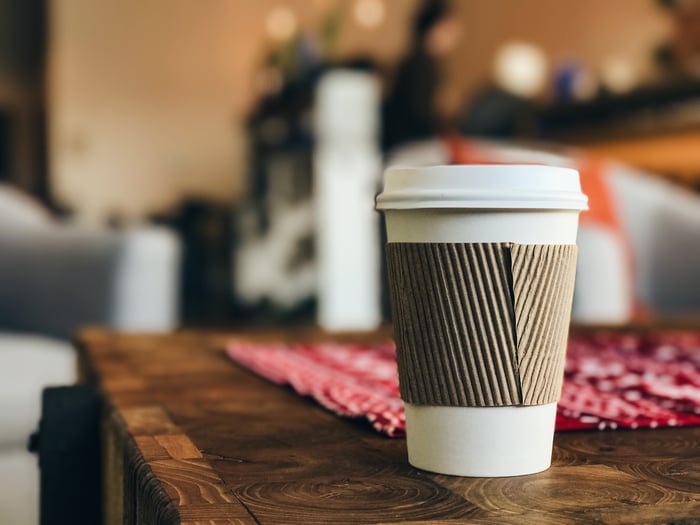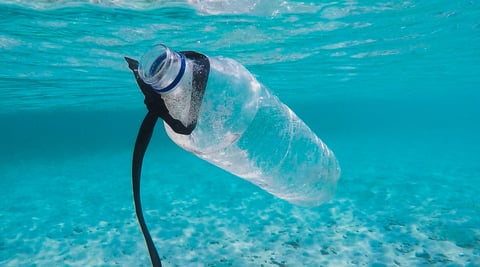
Is that reusable container really good for the environment?
We looked at different eco-friendly takeaway container options to figure out which are sustainable, and which aren't.
1. Reusable containers and swap-and-go reuse systems
Using a reusable container is the best way to avoid creating unnecessary waste. You can either bring your own or use one of the food place’s reusable containers, if it has set up a reuse system.

Examples of takeaway borrow and reuse systems in Melbourne are: Moroccan Soup Bar (which has one just for its restaurant), Retub’s container exchange program called Reswap, Cup Exchange, which involves a revolving coffee cup library of donated second-hand coffee mugs, Green Caffeen, Returnr, Swap Cup, and Noa and Parker.
Find reuse systems in your city, or think about getting one started in your town or business. They’re pretty simple to set up on a small scale!
2. Get creative
Cafés are getting hella creative with their reusing. From opting for second-hand coffee mugs and glass jars to using cardboard boxes that hold multiple items instead of single-use bags, they're doing it all.

Such innovations help give another life to something that was intentioned to be single-use. Before disposing a single-use product, think if you or someone else could reuse it. You can let the internet do the thinking for you and search for ideas, or even ask the people in your community who recycle for help.
3. Cardboard and certified home compostable containers
Plain cardboard is both home compostable and recyclable if not contaminated with food residue or grease. This simple option is our favorite single-use takeaway packaging option. Think pizza boxes, white paper plates, plain brown cardboard trays which don’t have a lining, and most wooden cutlery. These boxes' greasy bits have to be composted and not recycled, while the clean bits can be cut or torn off and recycled.
These compostable containers can also be reused in the garden to grow seeds. They can then be planted straight in the soil in the container when ready for planting.
Be careful - cardboard boxes and brown paper bags can have a lining that might not be home compostable or compostable at all (sneaky plastic alert!). While it would be ideal if there were labeled to let us know what they're made of, and if they're lined or not, often this isn't the case. So, how can you tell if a paper bag has a plastic lining? Try ripping the bag. If it tears cleanly, it's most likely paper.

Materials other than unlined cardboard that're usually home compostable are:
Palm leaf plates and bowls like these.
Sugarcane fiber products (also known as Bagasse or Biocane) are a brilliant alternative to plastic takeaway containers.
Home compostable sauce cups are a great alternative as well. Although we've seen lids for these little sauce holders made out of sugarcane fiber, which is the best option, they mostly come with PLA (second best) or PET (no thanks!). Actually, the best is when they come with no lid! Is one really needed?
Only compost the packaging if it's labeled as home compostable. In Australia, certified home compostable packaging will have Australian Standard number AS 5810-2010 on the label.
If they're simply labeled as compostable, chances are that they'll only biodegrade in a commercial compost facility. The Australian Standard for compostable products that will biodegrade in a commercial compost facility is AS 4736-2006. If you’re not in Australia, find out what the standards are in your country and stick to buying compostable products displaying the standard number that shows that they're home compostable.
4. Commercially compostable plastic containers, cups, and cutlery
"Bio-", "plant-based", and "bioplastic" are often greenwashing terms as they aren't necessarily biodegradable or compostable. The terms can simply mean that the products are made from plant materials. Also, be aware that sometimes some plastic products are simply labeled biodegradable as they would break into smaller pieces when they're discarded. Packaging labeled with these generic terms needs extra scrutiny to ensure if they're even commercially compostable.

Commercially compostable bioplastic is often criticized for using valuable agricultural land to create something that's single-use and un-recyclable. Additionally, many believe that these containers will biodegrade. That's not true. They've to be commercially composted. However, there are only a few - if any - places in Australia that do this. Also, it's difficult for customers to responsibly dispose of such containers, with restaurants not providing specific bins for them and a lot of councils not allowing them in their green bins.
So, while they're better than conventional plastic for numerous reasons, we recommend going for home compostable containers if possible.
Also, half the time, the lids used for commercially biodegradable bowls, sauce cups, and coffee cups are made from PET plastic and aren't compostable at all. It's best if all the packaging is made from the same type of material.
It's important to note that companies that sell commercially compostable takeaway packaging also sell conventionally non-compostable, recyclable, and non-recyclable items as well. So, it's essential to not rely on the brand name and assume that it's commercially compostable.
What to look for and what the plastic classification means:
PLA (Polylactic Acid): A commercially compostable bioplastic made from renewable resources such as cornstarch, cassava, sugarcane, or beets. It's usually used to make cups, bowls, containers, and lids.
PET: Plastic that isn't compostable. Often used for lids like these that can be used for compostable Biocane bowls, lunch boxes, sauce cups, and coffee cups. They can be recycled like conventional hard plastic.
RPET: PET that has been recycled.



